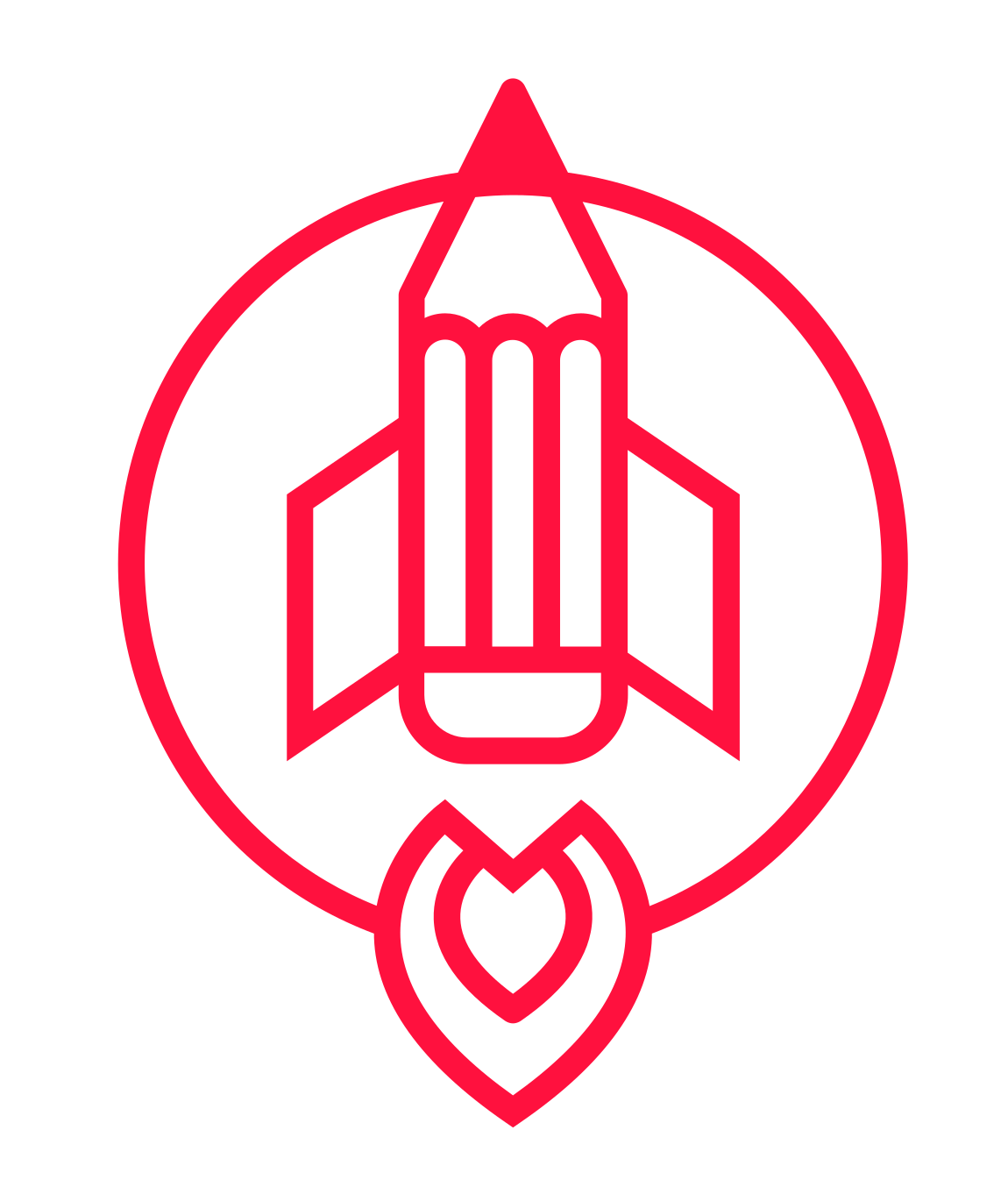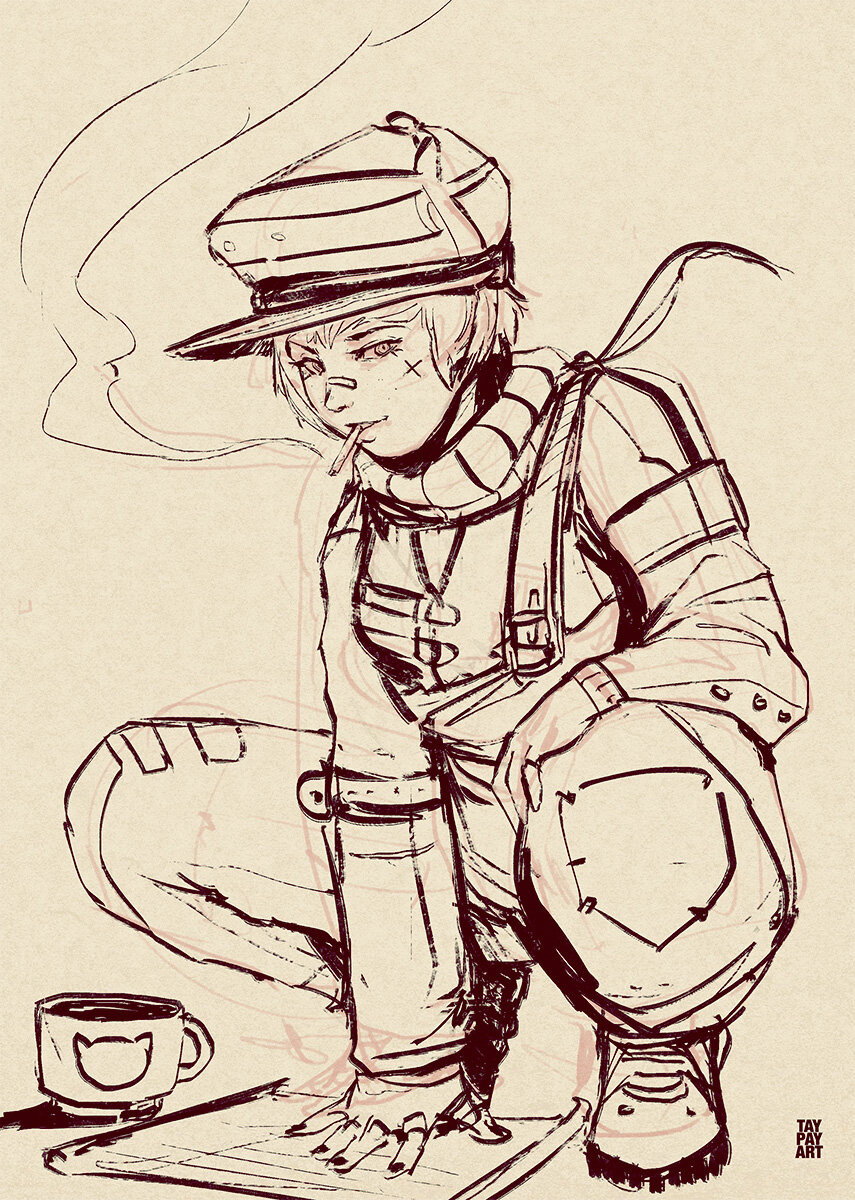Why "What" Is more important than "How" - A Drawing Guide.
So You want to draw better, huh?
Good, Here’s the Plan…
What do you Draw in order to See Improvement?
This is the the key question. The net is littered with “how to draw” tutorials - many of which are my own. Only after many students came to me with issues that “How” won’t solve did I finally realize the issue.
The quirk with that type of content is that it’s only 5-10% of the answer for any given drawing problem. The real stuff is the “What” and the “Why” of drawing. Without those crucial “Q’s” You’ll end up about as frustrated as you did before consuming that content. My aim with this post is to hand you the “What” and “Why” so you’ll have a much better time playing with the “How.”
The Best “What” steps to get better at drawing are…
Using Powerful Resources
habit-driven consistency
Self-Critique + Community Critique
Deliberate Practice.
We’ll be taking a look at how each of these factors will allow you to improve your drawing abilities enormously over time, but first we have to establish something:
Drawing is a Skill.
And like Any Skill - It can be learned.
This is a non-negotiable if you’re going to draw better.
Talent is a pursued interest, as Bob Ross stated. If you’re truly interested in drawing, drop all ideas of “talent” at the door. It’s far too flighty of a notion, and assuming you have it or not will ultimately harm your learning process either way.
Now, let’s move onto one last thing before we get into the best steps.
What is your “Why?”
As in, why do you want to draw better?
Is it because you want the envy of your peers?
Do you find that you “suck” in comparison to other artists, and want to get better so you can feel better?
Are you longing for the praise of your friends and family?
Or is it simply a feeling inside that is trying to find expression through the medium of drawing?
Without a good “why” your “how” will fall apart.
What drove me for so long was drawing inspiration from masters old and new, and wanting to count myself among them. Now I’m more driven to better express images and stories that enter my head, and mastery is only a secondary “why.
Here’s the thing, if you’re constantly seeking validation and approval, you’re linking your why to an external factor, and you’ll be at the mercy of that factor on your journey.
Internal factors can be harmful too—being beholden to feelings of inferiority for example. Yes, you may be driven to practice, but there will be sour notes all throughout that symphony. You’re robbing yourself of the joy of the process, and thus are more likely to quit again.
The theme that keeps coming up is to pick a why that doesn’t die.
A chief aim that won’t permit you to quit, even when you feel like it.
That is the key to the kingdom, the song for the soul. Even a simple “why” that don’t die is better than a grandiose vision that fades after a month or two. It’s the decisive factor between binge-gaming or picking up your sketchbook.
Now, onto the core of this guide.
The Ultimate Guide to Drawing - Beginner to Advanced:
PART 01 - Using Powerful Resources.
Powerful Resources Are full of MANA!
When you’re going the self-taught route, the wells that you draw from will greatly dictate your growth. Deeply flawed material will stifle your ability to climb upward.
For example, when I was on my come-up from the ages 14-20, I spent a LOT of time on newgrounds.com - wherein the bar for good art is pretty low. It’s more about humorous and raunchy flash animations. Some of the gilded content there is drawn rather poorly. Yes, there are a handful of phenomenal artists, but they aren’t as deified as the ones who can make you laugh.
And most importantly, the resources on that site were few and far between. Mostly animation or coding tutorials.
So what makes a powerful resource?
A Plate by the great Charles Bargue.
A powerful resource is one that calls out to you on a deep level. You’re almost learning just be observing it. Some of the most powerful resources I’ve ever chanced upon:
Andrew Loomis’s Books
George Bridgeman’s Books
Harold Speed - The Practice & Science of Drawing
The Massive Black Tutorials (no longer available)
Charles Bargue Drawing Course
I’ve learned more from those author/artists than any other. They took timeless principles, distilled them into practicable exercises, and gave clear examples. Everything I’ve done my best to translate into things like the Beginner Drawing Course.
Having the proper resource to draw from, like just ONE good course or book that you work through front-to-back, and then revisit in intervals, will do so much for you that words can scarcely describe it. It’s almost magical, really.
Image each resource as a sacred artifact. One that takes discipline and devotion to draw power from. As you examine, decipher, apply, and elaborate upon. That knowledge will transfer itself into your mind and hand, allowing you to perform new drawing feats. Drawing becomes a video game— addictive and engaging.
That’s why I list a great resource as the most important item. Words to push the principles into your mind, and visual examples to allow you to transpose them into your own style.
Hell, even the 6 free drawing lessons I offer are better than simply wallowing about in the mires of ignorance.
Find a method for that madness, a place for that potency. Update your tactics, approaches, and strategies as often as possible. Don’t let your habits become chains that prevent exponential progress.
Part 02 - Habit-Driven Consistency
Don’t break the chain.
Will power is weak. It’s a short-term strategy. Using your will to force yourself into drawing is a recipe for sporadic efforts, and scattered progress.
Instead, you’ll want to build the drawing habit. The best way to do this, is to set an alarm for drawing 2-4 times per day. Use your phone’s “clock” app to do so, and keep it simple.
“At 9AM I will draw from X resource for Y Minutes.”
Then one at least one more in the PM.
“At 7PM I will practice from X Resources for Y Minutes.”
Want to make the habit even more tantalizing? Add a reward after each session. It could be something as simple as watching an episode of your favorite show, eating a healthy snack, or hanging out with your friends or pet for a bit.
Once you’ve built the habit of drawing at least 2 times per day at regular intervals from a powerful source, you can begin to schedule “free time” in as well as a 3rd drawing slot. Even if it’s just 30 minutes playing free-form with what you’re learning, or spending 45 minutes pushing a personal project a couple yards closer to completion.
PART 03 - Self Critique + Community Critique
Steel yourself. It’s time to share.
This “What” frightens many artists, myself included. People can be cruel and foolish in their feedback, or downright trolls for no good reason.
That said, there are a lot of helpful souls out there that can offer specific and moderate feedback to ensure you’re conscious of flaws and routes to improvement in your work.
The artist ego is fragile. It will crumble like dry dirt, and ladle itself in self-pity— especially if the eyes of negative feedback so much as looks at it wrong. I get that. However, if you want to do this, you’ll have to build your sense of detachment, and your internal assurance.
Some of the best places to receive feedback are listed below. Join a subreddit or a poignant FB group and hop into the fray.
https://www.reddit.com/r/ArtFundamentals/
https://www.reddit.com/r/Beginner_Art/
One more thing— don’t just seek pats on the buttocks or validation. They don’t do much in the way of improving your art, only cement the need for further approval. To improve, you must kindly express gratitude for such compliments, but remain unfettered in your quest for ongoing growth and expression.
Self Critique
Self critique is among the most important skills to develop as an artist, or a creator of any sort. It’s the ability to see yourself and your work with greater objectivity, and the slider of that work toward greater brilliance.
Self critique isn’t tearing yourself up, beating yourself, or mistreating or denigrating the work. This happens from time to time because we’re humans, and when you first unleash the inner critic their methods can be cutthroat. If you’re feeling drained as a result of a persistent inner monologue that makes you want to devolve into a pile of tears, you’re doing it wrong.
Instead, imagine that there is a kind master within you. You can create an avatar of them if you’d like in your mind. They can even be the future version of yourself as a highly-proficient creator.
That person will be direct, but always constructive. They will use the depths of their knowledge to throw you a rope when you’ve painted yourself into a pit.
And when your shoulders slump in a disappointed manner, they will pat your back, offer a few kind words of what you’re doing well or how far you’ve come.
Part 04 - Deliberate Practice
Practice makes progress. Deliberate practice makes perfect.
Well, closer to perfect, anyway.
We all know the person who seemingly spends ages of their time doing something, but barely improves. The issue in this case isn’t consistency, it’s consciousness.
If you’re just “going through the motions” when your drawing alarm goes off - do you think you’ll be reaping the full benefits of the exercises?
No. No you won’t.
It’s about zoning in on what needs improvement. External and Internal Critique will point these things out.
After that, it’s up to you to deliberately apply that feedback. Drawing wonky noses? Better focus on whipping those babies into shape for the next few sessions. A mistake can carry through your work like a chronic condition - dragging down the vibe for ages if left unchecked.
Create a light sense of urgency will help to ensure you’re not being too lax with mistakes—especially recurring ones.
Conclusion
Clearing aside the weeds, we can now see the garden of improvement is a place with infinite potential. I invite you to tend to it daily, and seek to use each of these steps to great effect. Here they are once more:
Using Powerful Resources
habit-driven consistency
Self-Critique + Community Critique
Deliberate Practice.
Armed with these veritable “Whats” the “How” Will be much more resounding.
If you’re interested in more posts like this that help you master your drawing potential, and offer real guidance in a sea of confusion, I invite you to sign up for the free drawing lessons list. After It sends you all of them, I’ll be sure to keep you posted on future writings. Just toss in your email below and hit “Sign Up!”
Until next time, Happy drawing.
-T
Whenever you're ready, there are 2 ways I can help you:
1. Grow & Sharpen Your Drawing Skills here. (1,800+ students)
2. Build better Paintings and get Commissions here. (500+ students)










